
MG’s Mille Miglia racer Ex-Earl Howe K3 driven. Abingdon’s masterpiece 110 Mick Walsh takes the wheel of MG’s iconic supercharged ‘six’, the K3. Abingdon’s Magnificent Aristocrat. Without Earl Howe, the all-conquering MG K3 might never have existed. Mick Walsh takes the ’33 Mille Miglia class winner for a blast around the racer’s Buckinghamshire estate. Photography Tony Baker.
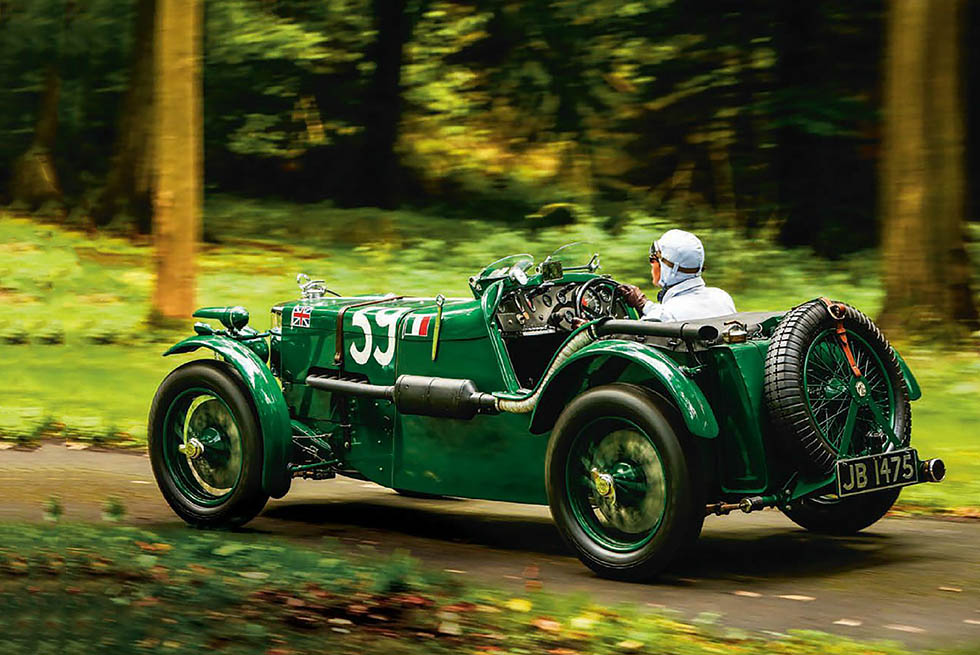
Earl Howe may have been a mature 44 when he first started out in motorsport, but few were more enthusiastic than the popular, dapper aristocrat. His family quite possibly had conflicting views to those of his wealthy racing chums, though, since Howe had a habit of discreetly selling off valuable heirlooms to fund a new racing car, sponsor a team, or tarmac a dramatic driveway through his Buckinghamshire estate. The peer even had the portico of the front door extended so that he could park an open car underneath to shelter it from the elements.
Throughout the 1930s, Howe was often criticised for his preference for exotic European machinery, but his acquisition of models from Alfa, Mercedes, Delage and Bugatti was down to the lack of competitive home-built machinery. A great admirer of the Mille Miglia – “It’s very much in the character of the great motor races of days gone by between Paris-Vienna and Paris- Berlin,” he once enthused – Howe longed to break Italian domination with a British team. At a party after the 1930 Double Twelve at Brooklands, the Earl met a dashing 25-year-old Italian count, Giovanni ‘Johnny’ Lurani, and a lifelong friendship began. Conversation soon turned to the Mille Miglia and a plan was hatched to enter the 1931 race with a Bentley, but the collapse of the great Cricklewood concern curtailed the idea.
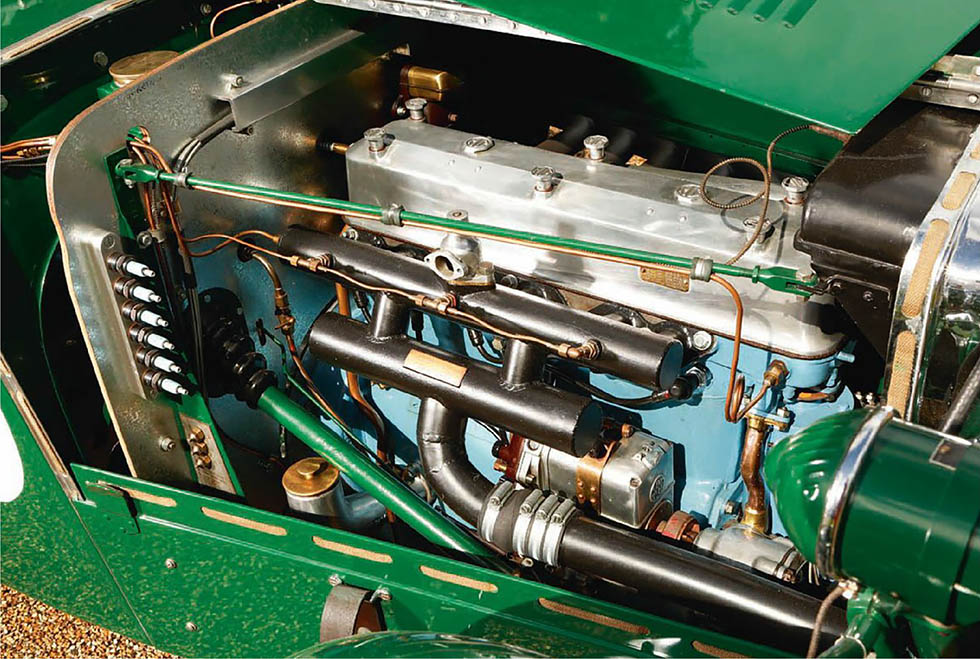
Howe was an outspoken critic of British sports car manufacturers and regarded Brooklands as a limiting factor to development. The real racing, he considered, took place on the continent. He applauded Talbot’s overseas efforts, but, no doubt influenced by his dashing friend ‘Tim’ Birkin, maintained that supercharging was the way to go. With the demise of the Irish GP, MG started looking for a high-profile race with which to promote its cars, and when Howe approached Cecil Kimber his enthusiasm was reciprocated.
The main problem was Sir William Morris’ negative views about the expense and perils of motorsport, but eventually a deal was done whereby Howe would fund the team if MG could provide a suitable car. Rumour has it that the peer sold a painting by Franz Hals to help cover the considerable costs, with George Eyston and Birkin immediately enlisted for the team. The 1932 London Motor Show launch of MG’s new Magnette series with its short-stroke, 1087cc ‘six’ and Wilson pre-selector gearbox was the catalyst for a high-performance K3 prototype for the 1933 season. Fitted – at the instigation of Eyston – with a Powerplus supercharger, the new MG looked to be the voiturette challenger with which Britain could take on Maserati in the 1100cc class of the Mille Miglia. Kimber put the pressure on his design team, led by talented chief engineer Hubert Noel Charles, and the prototype sports car was developed in just 20 weeks. The first chassis, K3751, was fitted with modified C-type bodywork and optimistically entered for the Rallye Monte- Carlo. The car struggled in the winter conditions, but survived to enter the Mont des Mules hillclimb four days after the Monaco finish, GW Wright setting the fastest time. Howe, meanwhile, was already planning his practice sortie with the second K3, K3752, which featured a distinctive sloping radiator.
I like to think that planning meetings for the team – Birkin, Eyston, young star Hugh Hamilton and wealthy ex-Bentley Boy Bernard Rubin, together with Howe’s loyal top mechanic, Percy ‘Tommy’ Thomas – happened at Penn House, the gravel drive packed with grand machines as the ambitious group studied maps in the drawing room. Howe always did things in style and, as well as the K3, the convoy south included an Alfa 1750 team car and the ex-Rudi Caracciola Mercedes 38/20. The MG was so fresh that Abingdon’s Reg ‘Jacko’ Jackson had to run in the engine en route to Newhaven. All three exposed sports cars were totally unsuitable for the mid-winter trial, however, as the drivers discovered in the Alps. Despite the tough conditions and freezing temperatures, it was an epic trip that included visits to Bugatti, meeting Tazio Nuvolari and Enzo Ferrari in Milan, plus an audience in Rome with the King of Italy and Mussolini. The latter was a real car enthusiast and was much inspired by the titled English party.
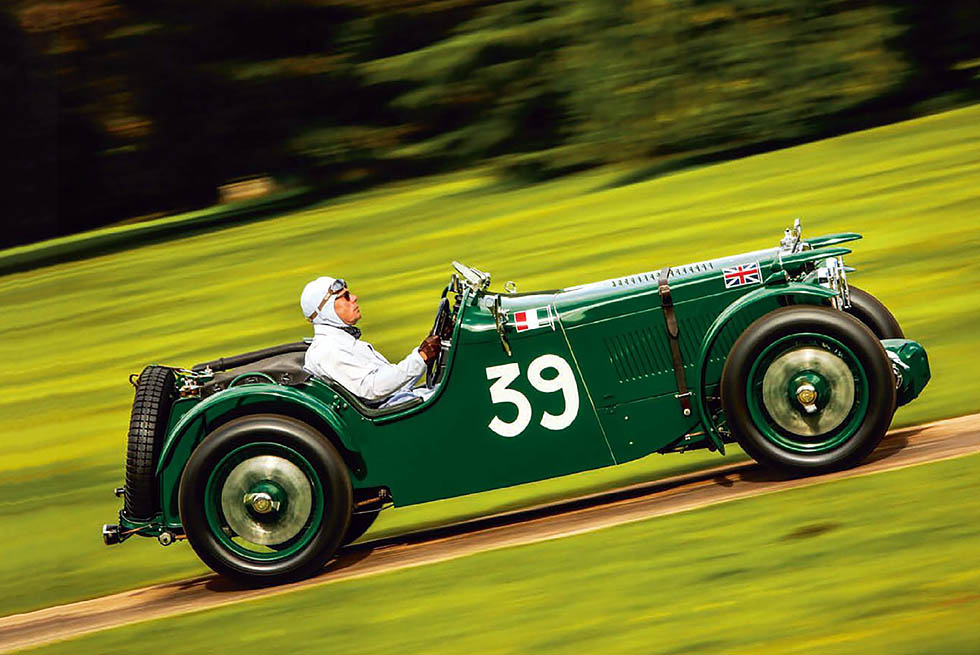
The K3 proved very fast, and greatly impressed Eyston over the passes. Birkin quickly noted that the front axle location was weak under hard braking, while the problem of rain blowing over the scuttle would be resolved with a neat gutter for the Mille Miglia team cars. Lurani proved to be an essential team member, smoothing out hassles and dramas, and even Ferrari helped to arrange hotel bookings and garages for the May event. Howe, a Le Mans winner in 1931 with Alfa Romeo, was a valued customer. The MG couldn’t have had a tougher test, and the journey gave Thomas an important insight for planning pitstops for fuel and repairs during the race. Three were organised – in Siena, Perugia and Bologna – but none of the team could have imagined the dramas that would play out during the challenging 1000-mile event.
With Howe and Hamilton in K3001, Birkin and Rubin in K3002, and Eyston with Lurani in K3003, the team cars were shipped from Cornwall to Genoa but clearing customs proved to be the first challenge when a huge sum was demanded by the local officers. Story has it that Lurani contacted Mussolini to help release the racing green cargo, and eventually the MGs were driven to a garage in Milan for final preparations
‘RUMOUR HAS IT THAT THE PEER SOLD A PAINTING BY FRANZ HALS TO COVER THE CONSIDERABLE COSTS’.
From the outset, Eyston and Lurani were the most thorough, even heading out to Monza to resolve issues with spongy brakes and poor steering. Lurani elected to wear red for luck and insisted on a grab-handle being fitted to the rear wing, since he suffered from nausea as a passenger.
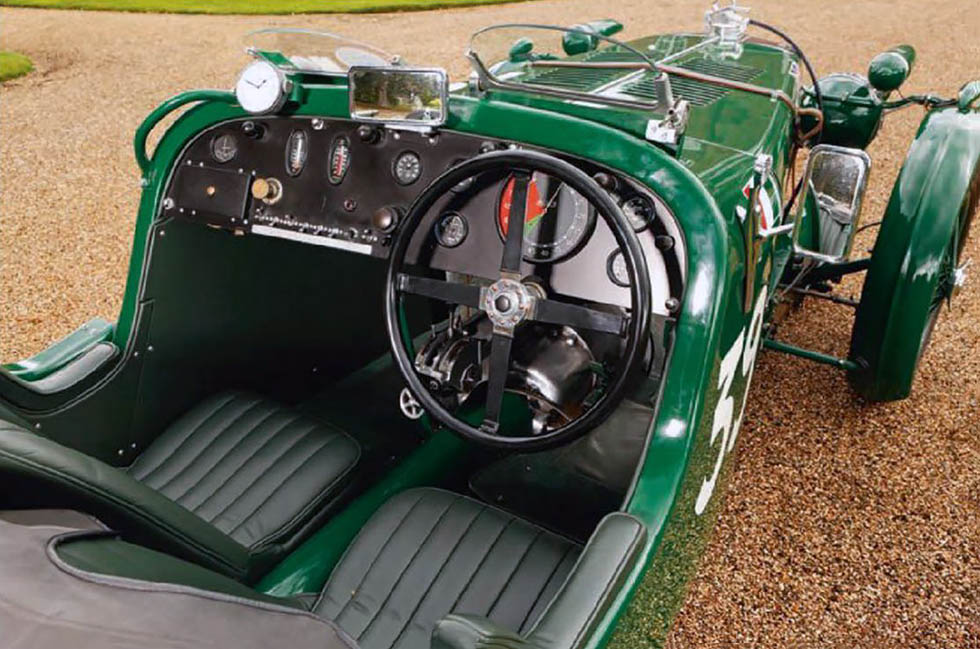
The late discovery that cars required silencers would be another headache for the ‘insomnia crew’, as the mechanics were known. The team relocated to Brescia two days before the start and caused quite a stir when the raucous MG ‘sixes’, their green bodywork gleaming, arrived in Piazza Vittorio for scrutineering.
‘Viva, viva gli Inglese!’ the throng of locals is reported to have shouted after Howe’s thank you speech. Birkin was allegedly nominated to play the hare and push the Maseratis to breaking point, but in truth each crew drove its own race and, with earlier starting times, the MG drivers never saw their red class rivals.
Despite a lack of sleep due to the locals partying all night, the adrenalin was high when Eyston drove onto the start ramp at 8:03am in car number 39. The choice of soft plugs soon proved to be a problem – not helped by the increased oil flow to the supercharger – and forced an early stop, but mechanic Bert Denly had cleverly devised a neat storage for 50 plugs on the seatbacks. Birkin, in car 41, soon passed Eyston but an incident braking from 100mph to avoid a horse and cart caused him to briefly relinquish the lead. The Bentley hero’s familiarity with the road to Modena, however, led to him setting the pace.
Early dramas included a 70mph launch while crossing the pontoon bridges over the river Po – really spooking Howe – plus continual trouble with the plugs. Eyston later reported that they changed 150 during the race.
By Bologna, Birkin had stretched his lead to four minutes over his team-mates, but close to Siena a burnt valve had him waving his compatriots past. After six hours and 16 minutes, Eyston arrived in Rome and handed over to Lurani, who proved to be very quick. Only Nuvolari’s Alfa 8C was faster to Terni, but charging problems began to manifest themselves en route, leading to concerns for the long night ahead.
Both Lurani and Eyston were suffering from exhaustion by the time they reached the pitstop at Perugia, from where instructions were sent to Bologna to source a new battery. Over the Apennines the spectators’ bonfires made visibility difficult, particularly with the oncoming trucks that hadn’t been stopped for the race. The special Marchal foglamps were effective at cutting through the dusty twilight, but the electrical woes restricted their use. The engine was also misfiring due to oiled plugs and the brakes proved to be hopeless on the mountain descent. In the dark, Howe started to make up time on his team-mates. The gap shortened after a pitstop in Porta Mazzini, Eyston and Lurani losing 14 minutes when their new battery wouldn’t fit.
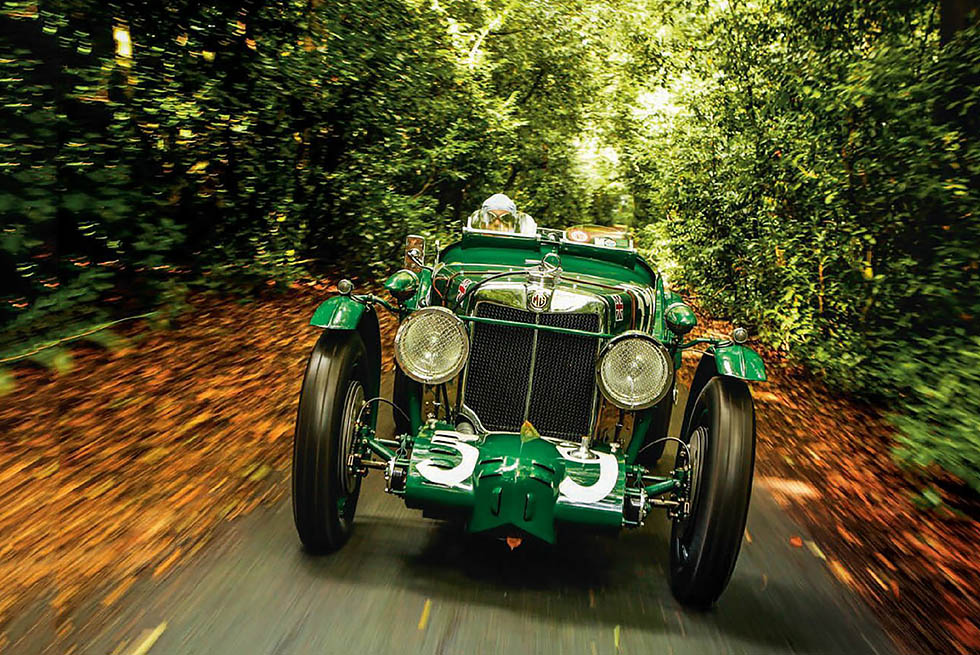
After 15 hours and 750 miles, Howe finally handed the wheel to Hamilton, but soon vowed that he would never again go as a passenger. On the last leg through the Dolomites, Hamilton made up four minutes but, with a single headlight, Lurani was struggling to maintain pace over the mountain roads. Punctures and missing jacks, plug changes, plus oncoming traffic all challenged the MGs, but with just seconds separating the team, a revived Eyston was in a fighting mood. Leading the event on the road, he gunned the dusty K3 through the ‘wall’ to the Brescia finish and, at 2am, the crowd swarmed around the English car to lift the exhausted driver from behind the wheel. The first to cross the line, the MG had passed 38 rivals and for 18 hours, one minute and four seconds had averaged 91.6kph. Four minutes later, Hamilton and Howe raced over the line, 90 seconds adrift of their compatriots. A consolation was the team prize but all were overjoyed at the result. “We were using experimental cars, and were very happy and proud that an English car was first across the finishing line,” said Howe to the press. And that was just the beginning for K3003, Nuvolari later taking it to victory in the Ulster TT.
‘BIRKIN WAS ALLEGEDLY NOMINATED TO PLAY THE HARE AND BREAK THE MASERATIS’
The car’s identity was mysteriously split in the ’30s when it was sold to Germany with a replacement frame – also stamped K3003 – having been rebuilt after a crash en route to Shelsley Walsh. The saga wasn’t discovered until the early ’50s, when Mike Ellman-Browne acquired a bodiless K3 project and had forensic specialists analyse the chassis numbers. The restoration of the genuine K3003 proved to be beyond Ellman-Browne and eventually, in the early ’70s, he sold the MG to Philip Bayne-Powell who did an impressive job. The car went on to become a popular sight at MGOC and VSCC meetings and Bayne-Powell reunited a 78-year-old Eyston with it for an emotional drive around Brands Hatch in 1975.
In 1986, K3003 was sold to Australian MG enthusiast Peter Briggs, who competed extensively in races and rallies Down Under. In preparation for the 80th-anniversary celebration of the car’s historic Mille Miglia performance, K3003 was totally rebuilt by John Hunting in 2012 – the crisp little ‘six’ going on to rasp around the famous route to the delight of the locals during the 2013 retrospective. What is arguably the most famous MG of all finally returned to the UK this year to attend the Concours of Elegance in Edinburgh. Before it was shipped backed to Australia, we hatched the idea with Briggs and historian Graeme Cocks of taking it to Penn House as a tribute to Howe. To see the immaculate supercharged K3 parked outside the 18th-century red-brick manor where its legendary Italian sortie was planned was a special moment. Frederick Curzon, the seventh Earl Howe, even allowed us to carry out the huge Grand Prix of Brescia Trophy that his great uncle had carted back from the Mille Miglia.
‘FROM 3000RPM, THE ENGINE REALLY SINGS AS IT DELIVERS ITS ADDICTIVE PUNCH’
There’s a good chance that the K3s were tested on Howe’s private driveway, and K3003 is perfectly suited to the narrow and challenging mile-long course from the main gate to the house. The mind boggles at the impressive cars and brave aces who must have roared up this narrow strip of tarmac but, as I climb in behind the broad four-spoke wheel and drop into the hip-hugging bucket seat, my mind is conjuring the famous Italian race and that epic 18-hour test. Authentically restored right down to the Jaeger clock that Lurani fitted to the dash and the distinctive Marchal foglights that Briggs tracked down in Holland, number 39 is a fine testament to the team that developed it in just 20 weeks. “Don’t be afraid to use the revs,” encourages Briggs before I tear off down the shaded, damp driveway. After a few runs, I’m totally smitten with this 1087cc marvel. The ENV 75 preselector gearbox is a joy to work via the stubby lever, allowing you to keep both hands on the wheel through corners before dipping the pedal to engage the next ratio and letting that sweet blown ‘six’ eagerly power away. From 3000rpm, the engine really sings, accompanied by a gorgeously crisp exhaust crackle as it delivers its addictive mid-range punch.

Clockwise: dramatic outside exhaust produces incredible soundtrack; neat pre-selector lever and brake adjuster; twin quick-release fuel fillers. Clockwise: K3 at speed is an imposing sight; Jaeger stopwatch, as fitted by Lurani; original-style Marchal foglights were discovered in Holland. Clockwise, from main: purposeful body with low seating; Powerplus blower; workmanlike cockpit; 1087cc ‘six’ produced up to 125bhp in period; team poses with K3003; Birkin and Eyston were close for early stages of Mille Miglia.
The ’box makes the K3 an easy car to drive and, with the sure-footed handling of the sturdy chassis, it’s superb fun to blast along Howe’s home test track. The steering lacks precision, but the neutral balance and revvy motor continually inspire. The brakes are strong, and only the rougher sections cause the MG to skip about. Sitting low inside the cockpit, the superbly built K3 feels more modern than its age – the close proximity of trees is all that limits my speed in this wonderful thoroughbred.
Consider that Howe had already owned the greatest pre-war sports and racing cars, and you come to realise how special the K3 was to engage his interest. Nuvolari, Eyston, Birkin and Richard Seaman were also fans, which says it all about this marvellous machine.





